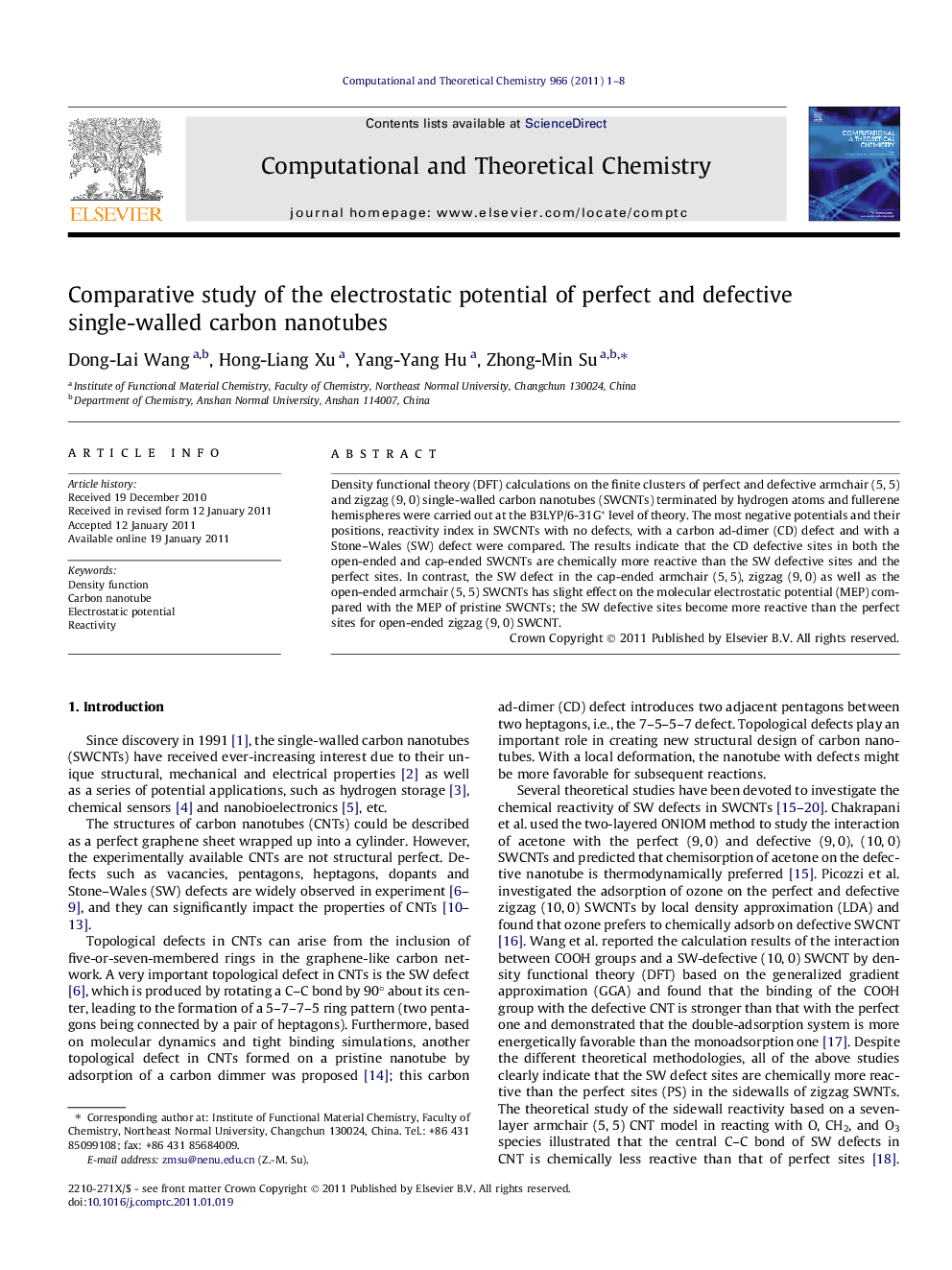| Article ID | Journal | Published Year | Pages | File Type |
|---|---|---|---|---|
| 5395220 | Computational and Theoretical Chemistry | 2011 | 8 Pages |
Abstract
Density functional theory (DFT) calculations on the finite clusters of perfect and defective armchair (5, 5) and zigzag (9, 0) single-walled carbon nanotubes (SWCNTs) terminated by hydrogen atoms and fullerene hemispheres were carried out at the B3LYP/6-31G* level of theory. The most negative potentials and their positions, reactivity index in SWCNTs with no defects, with a carbon ad-dimer (CD) defect and with a Stone-Wales (SW) defect were compared. The results indicate that the CD defective sites in both the open-ended and cap-ended SWCNTs are chemically more reactive than the SW defective sites and the perfect sites. In contrast, the SW defect in the cap-ended armchair (5, 5), zigzag (9, 0) as well as the open-ended armchair (5, 5) SWCNTs has slight effect on the molecular electrostatic potential (MEP) compared with the MEP of pristine SWCNTs; the SW defective sites become more reactive than the perfect sites for open-ended zigzag (9, 0) SWCNT.
Related Topics
Physical Sciences and Engineering
Chemistry
Physical and Theoretical Chemistry
Authors
Dong-Lai Wang, Hong-Liang Xu, Yang-Yang Hu, Zhong-Min Su,
